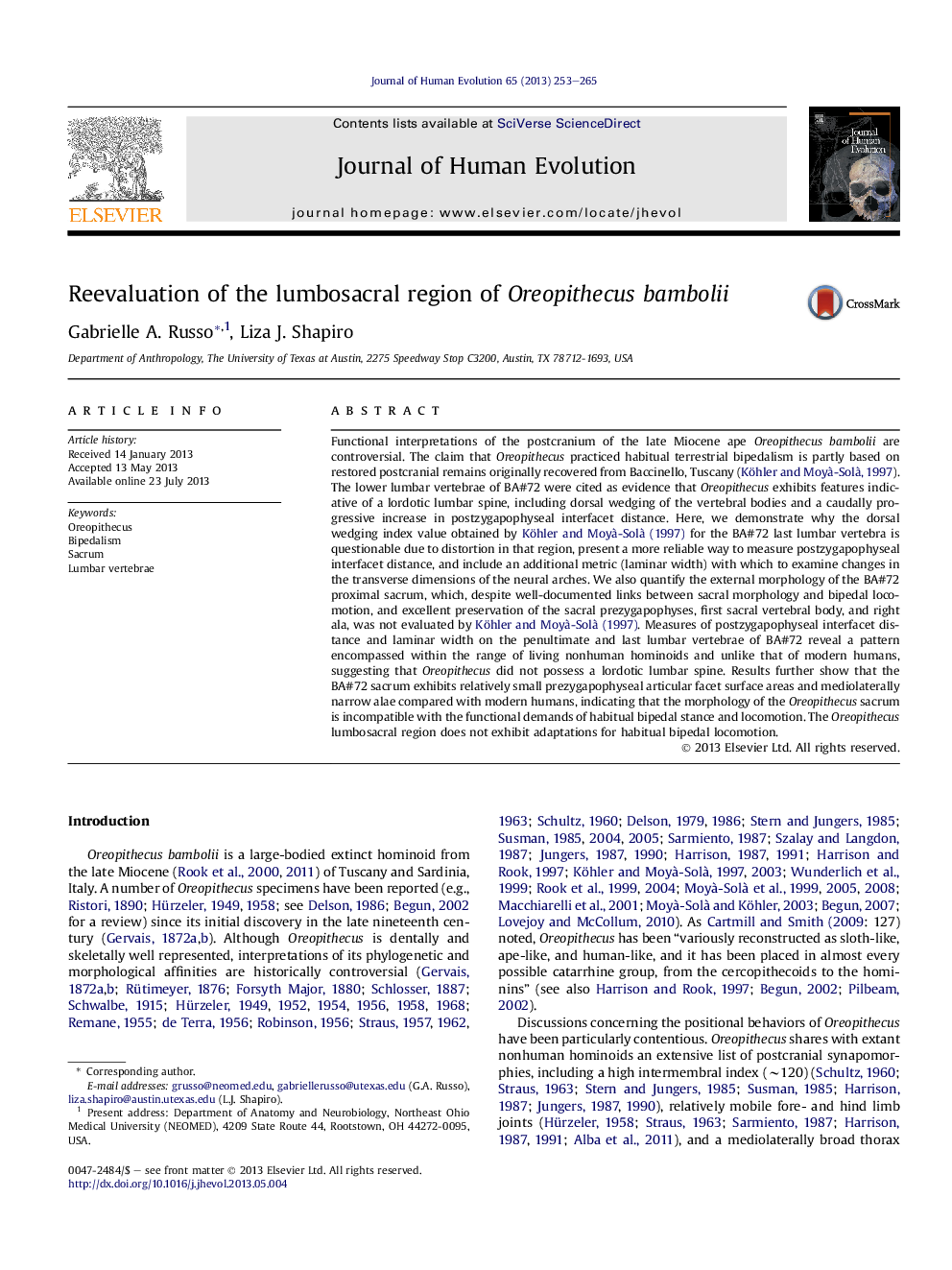| کد مقاله | کد نشریه | سال انتشار | مقاله انگلیسی | نسخه تمام متن |
|---|---|---|---|---|
| 4556205 | 1329462 | 2013 | 13 صفحه PDF | دانلود رایگان |

Functional interpretations of the postcranium of the late Miocene ape Oreopithecus bambolii are controversial. The claim that Oreopithecus practiced habitual terrestrial bipedalism is partly based on restored postcranial remains originally recovered from Baccinello, Tuscany ( Köhler and Moyà-Solà, 1997). The lower lumbar vertebrae of BA#72 were cited as evidence that Oreopithecus exhibits features indicative of a lordotic lumbar spine, including dorsal wedging of the vertebral bodies and a caudally progressive increase in postzygapophyseal interfacet distance. Here, we demonstrate why the dorsal wedging index value obtained by Köhler and Moyà-Solà (1997) for the BA#72 last lumbar vertebra is questionable due to distortion in that region, present a more reliable way to measure postzygapophyseal interfacet distance, and include an additional metric (laminar width) with which to examine changes in the transverse dimensions of the neural arches. We also quantify the external morphology of the BA#72 proximal sacrum, which, despite well-documented links between sacral morphology and bipedal locomotion, and excellent preservation of the sacral prezygapophyses, first sacral vertebral body, and right ala, was not evaluated by Köhler and Moyà-Solà (1997). Measures of postzygapophyseal interfacet distance and laminar width on the penultimate and last lumbar vertebrae of BA#72 reveal a pattern encompassed within the range of living nonhuman hominoids and unlike that of modern humans, suggesting that Oreopithecus did not possess a lordotic lumbar spine. Results further show that the BA#72 sacrum exhibits relatively small prezygapophyseal articular facet surface areas and mediolaterally narrow alae compared with modern humans, indicating that the morphology of the Oreopithecus sacrum is incompatible with the functional demands of habitual bipedal stance and locomotion. The Oreopithecus lumbosacral region does not exhibit adaptations for habitual bipedal locomotion.
Journal: Journal of Human Evolution - Volume 65, Issue 3, September 2013, Pages 253–265